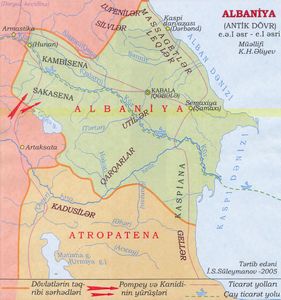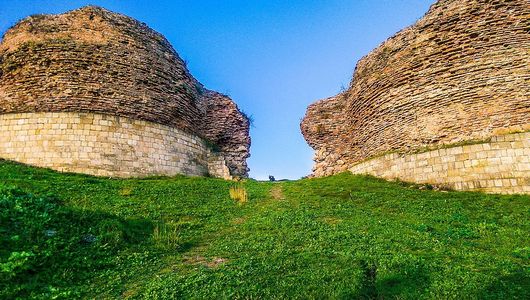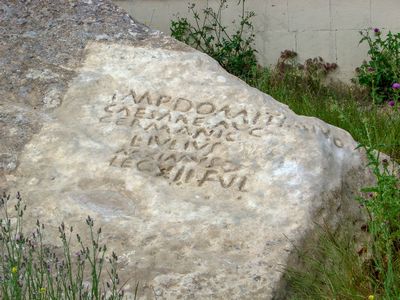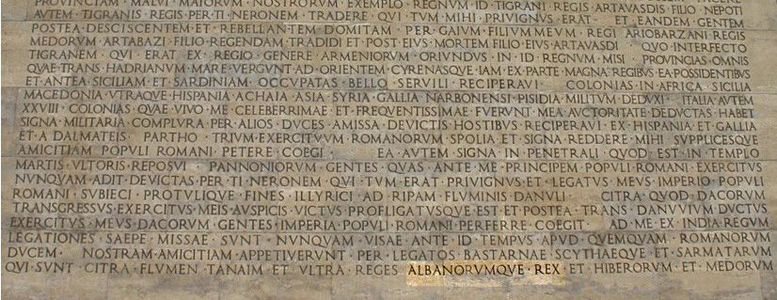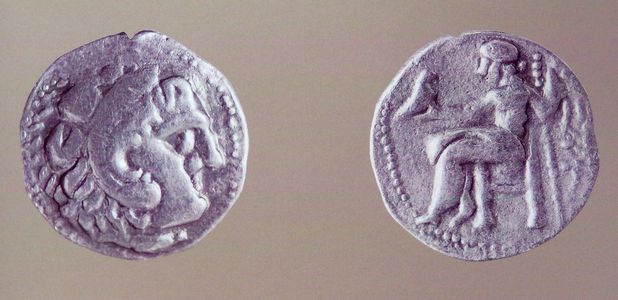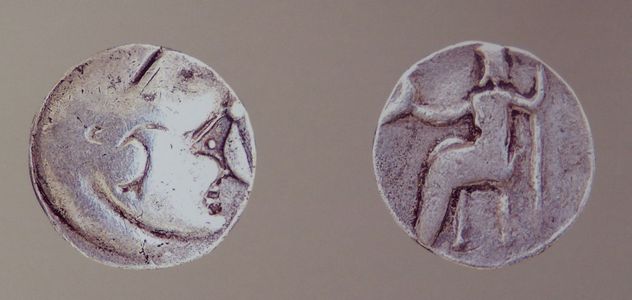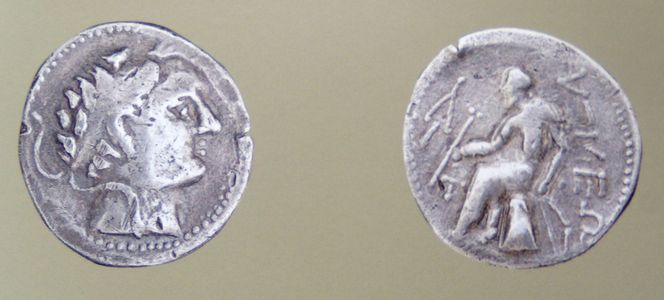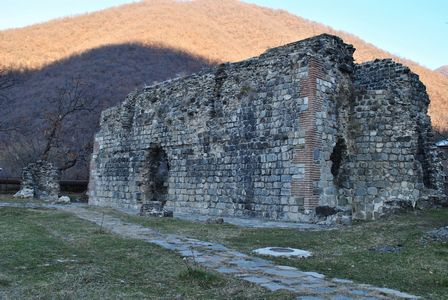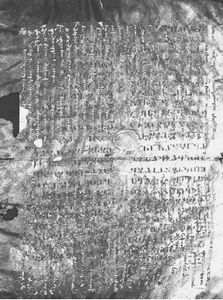ALBANIA AND ALBANIANS
Are the names given by antique sources to the state which had existed between IV century B.C. and VII century A.D. mainly in the territory of Northern Azerbaijan, and to the ethnicities living in that country. According to those sources, territories inhabited by the Albanian tribes had been located between the riverbed of Araz and Talysh mountains in the south, and the northeastern foothills of Greater Caucasus Range in the north. Besides very Albanians, these territories had been populated by a number of other tribes, too, including Caspians, Utis, Aynians, Anariacaes, Savdeis, Gardimans, Hers, Gillites, Legis, Didurians, Chilbians, Lpinians, etc. All these tribes were the bearers of Yaloylutepe and jar burial cultures, and finally established a single state.
POLITICAL HISTORY
Albanians had been one of many ancient tribes living to the north of Araz river. Name of this tribe was first mentioned when describing the battle of Gaugamela, at which Albanians were among forces which struggled against Alexander the Great. As stated by the antiquity sources, the state of Albania was established in IV century B.C. This statement is confirmed by the fact that in III century B.C. Albanians had minted their own money which was similar to the Alexander’s coins, and used signet rings with various domestic decorations. Capital of the antique Albania was based in Gabala.
On the second half of IV century B.C. there were two important states in the territory of Azerbaijan – Atropatene in the south and Albania in the north.
Albania’s territory was limited by the Caspian coast in the east, and Iberian borders in the west (riverbed of Gabirri – Iori). Some antiquity sources even called Caspian as the Albanian Sea. Northern border of the state lied along Samur range to the north of Darband, while the southern border was confined to the riverbed of Araz.
According to Strabo, Albanian people had spoken 26 languages. Among tribes of the country, there were Caspians, Utis, Gargareans, Gardimans, Legis, Gillites, etc. In the middle of 1st millennium B.C., all these tribes had been integrated by Albanians and became known under the name of the dominant tribe. Strabo stated that if in the earlier periods each tribe used to have its own leader, since 60’s B.C. they started to be governed by a single central authority. In I century B.C., Albania was ruled by Grovs during military campaigns of Pompey, and by Zober during wars with Mark Antony. Earlier in II century B.C., the country had been ruled by Arran who founded a dynasty of Arranshahis. In the next century, the dynasty was replaced by a minor branch of Parthian Arsacids. Vache I, Urnayr, Vachagan I, Mirhavan, Satoy, Asay, Arsvagen, Vache II and Momin Vachagan III were the kings from that dynasty.
Albania’s second major authority were hierophants. Ruling class of the country also included aristocrats and clergy. Other classes of the social hierarchy were peasants, artisans and merchants. Unlike other antiquity states like Egypt, Mesopotamia, Greece and Rome, slavery had not been commonly practiced in the Albania’s territory.
In I century B.C., Albania and Iberia started playing significant role in the military plans of Roman Empire. In 66 and 65 B.C., Albania was invaded by the army of Pompey. In spite of gaining the two battles occurred in the valleys of Kur and Alazani, eventually Pompey was forced to retreat. According to Strabo, at the struggle against Pompey’s legions Albanian army consisted of 60 thsd infanteers and 22 thsd chevaliers. According to Roman sources, in the army there were both male and female recruits.
As stated in the Ancyre stele which dates back to the late years of Octavian Augustus rule, Albanian king intended to establish friendly relations with Roman Empire. Therefore at that time rulers of Albania had preserved their independence and tried to establish peaceful relations with Rome. Another evidence of the existent two-sided relations is a Gobustan stele written in I century A.D. and related with the name of Domitian.
In I-II centuries A.D., Albania had suffered a lot from the invasion of northern Sarmatian and Alanian tribes.
MONEY
Monetary circulation history of Azerbaijan began with silver drachms and tetradrachms of Alexander the Great. Thanks to close relations with various Hellenistic states, silver coins of Macedonia, Thrace, Athens, Rome, Bithynia, Cappadocia, Pont, Seleucids, Parthia and Bactria had been widely used in the money turnover of antique Azerbaijan. It was during this period that Azerbaijan states had entered international monetary turnover and started coining their own silver drachms and tetradrachms. First Albanian mint was apparently located in its capital Kabalaka (present-day Gabala). Known as primary statehood symbol of the country, these coins are the indicatives of developed monetary system and well-established political and administrative system in Albania.
ECONOMY
Economic system of Caucasus Albania was mainly based on horticulture, cattle breeding, crafts and trade. Among material heritage of the Albanian towns and graveyards, there are sound examples of tools and products related to each of the cited economy sectors.
Horticulture
Albanians tilled the soil with wooden ploughs and spades, scattered grains of cereals on the earth, used aryks for irrigation, collected harvest with iron sickles and scythes, processed ears with animal-drawn threshing boards, contained crops in wells and jars, and grinded the grains with grindstones and hand-mills (the latter had been introduced in I-II centuries). In Albania, there were watermills, too. Archaeological records of the period’s sites include multiple cropping tools and remains of different plants. On Mingachevir site, even 15 kg of flour and dough kneaded from wheat flour were found. Albanians were also engaged in beekeeping and melon cultivation and gardening. They grew chestnuts, pomegranates, peaches, cherries, grapes and other fruit crops, cultivated watermelons, pumpkins and vegetables. They pressed grapes in the special abreuvoirs and produced wine. Remains of wine making workshops and a lot of wine storage jars were discovered in Shamakhi and Gabala. As evidenced by the cotton seeds discovered in Mingachevir, Albanians cultivated industrial crops, too.
During archeological excavations in Shamakhi and Gabala, the remains of wine workshops and many large wine jugs were found.
Animal husbandry
Albanians practiced transhumance pastoralism consisting in seasonal movement of livestock between summer pastures located in the alpine meadows, and winter pastures located on lowlands. They raised various poultry (chickens, roosters, etc.), sheep, goats, cows and pigs, and kept horses, camels and dogs. Albanians used churns to produced butter, served milk in unique milk jugs and used special scissors to clip sheep. They placed sacrificed animal slabs and sometimes holy animal figures in the graves.
Albanians practiced net and rod fishing, produced salt and dried fish. As demonstrated by archaeological discoveries, they hunted wild boars, deer, foxes, cranes and other animals.
CRAFTS
Albania had well-developed and unique pottery culture. Milk jugs and one- and three-legged vases produced in the country had no analogues in the neighboring states. Earthenware was produced on quadrangular kilns. The kilns had two tiers with fuel compartment on the bottom tier and kilning chambers on the top. Beside differently shaped and sized crockery items, potters produced tiles, statues, spindle whorls and other earthenware items.
Other developed types of Albanian crafts were casting, forging and decoration of metals. Both hot working and cold metal forging methods were used by the country’s smiths. Albanian jewellers made different adornments from the precious metals and stones. In the archaeological record of Caucasus Albania, there are many jewellery artefacts, including rings, earrings, pins, belt buckles, scales, charms and beads.
Since II-III centuries A.D., Albanians started producing the glass. Before that period glassware had been imported from the Near East countries.
Albanians produced cotton, wool and silk materials and threads. There are a lot of earthen, stone and wooden spindle whorls, as well as cotton yarns, thread clues and sewing tools discovered from the remains of Albanian houses and graves. In one of the houses, archaeologists even found remain of a light-brown carpet.
Antiquity period of the Caucasus Albania was marked by developed domestic trade and widening international trade relations. One of the international transportation routes had passed along the Caspian coast of Albania and connected northern and southern parts of the region. So was the international shipping route used to transport Indian goods to the Black Sea region via Oxus (Amu Darya) river, Hyrcanian (Caspian) Sea and Kur river. Trade route connecting Albania with Iberia was described by Strabo. Albania had imported glazed earthenware, glass and metal crockery and adornments.
Emerged on geographic locations which had been favourable for the evolution of crafts and the trade, Albanian towns started to expand since the middle of the 1st millennium B.C. During Hellenistic period the country had become a part of the time’s international trading relations. Antique sources mention that there were 29 towns and large settlements in Albania, including Kabalaka (Gabala), Kemakhia (Shamakhi), Ayniana and Anariaka, as well as Telaba, Gelda, Albana and Gaytara located on the Caspian coast.
CHRISTIANITY
According to Strabo, antique Albanians used to worship gods of Sky, Sun and Moon. The country’s first Christian communities emerged back in the early I century A.D. It happened thanks to the missionary activities of Christ’s apostles and their pupils who had travelled to Caucasus from Jerusalem and Syria. In 313 A.D., Albanian king Urnayr and the country’s clergy had publicly accepted Christianity and declared it as the state’s official religion. However, traditional cults of Tengrianism, Manichaeism and Zoroastrism continued to be practiced in some parts of the country. In 488, Albanian priests came together in Aquen convocation, which had formulated feudal basis of the Christian religion and triggered crackdown of the more ancient faiths. Important contribution to the local spread of Christianity was made by the development of new alphabet, opening of schools and translation of Bible and other religious literature. Christianity period was also marked by the construction of cross-in-square churches and basilicas. One of the first Christian temples of Azerbaijan are the basilica built in Gum, and circular church erected in Lakit villages of Gakh.
WRITING SYSTEM
Caucasus Albania had rich writing culture. For example, there are 52 letters on a stone cross base, and up to 140 letters on the remaining artefacts (e.g. earthenware candleholders, pots, etc.) discovered from Mingachevir site. Words written in the Albanian alphabet were also found on ceramic items and manuscripts preserved in some Near East monasteries.
